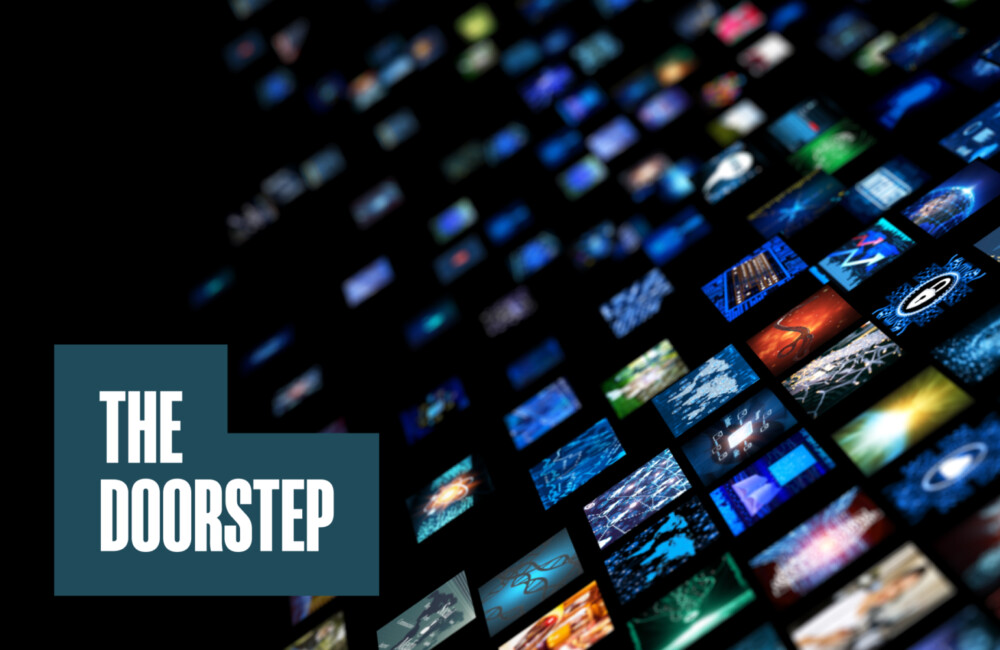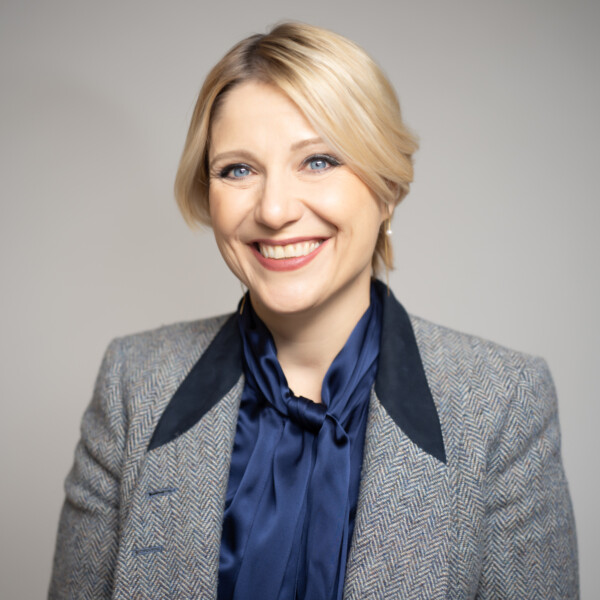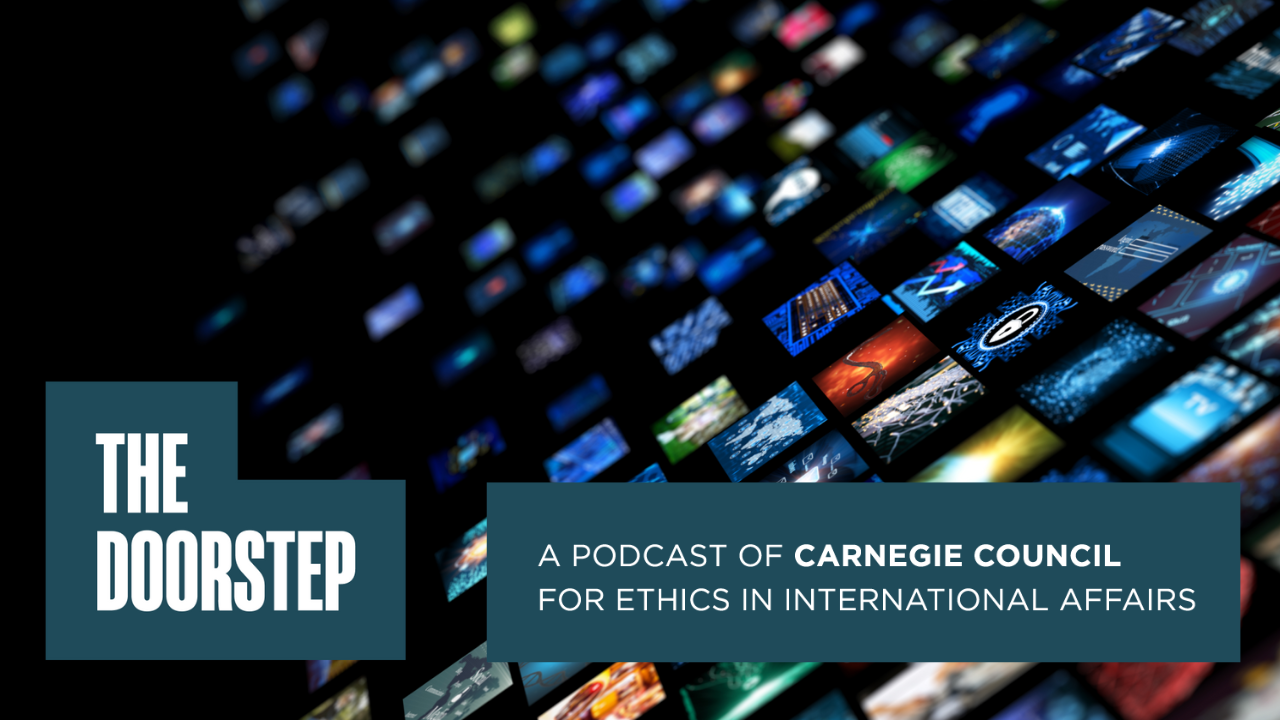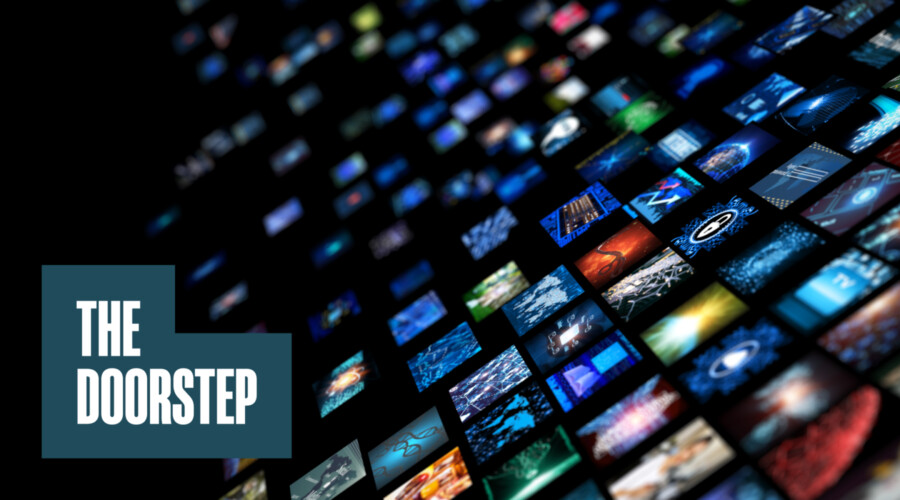With India now at helm of the G20 and a summit set for New Delhi in September, the South Asian nation is stepping up its star power on the international stage. Harvard Business School's Prof. Tarun Khanna, also director of Lakshmi Mittal and Family South Asia Institute, speaks with Doorstep co-hosts Nick Gvosdev and Tatiana Serafin about why the world needs to recognize this Indian moment—and how this time it will stick. Khanna also explores American's doorstep connection to India and why this will continue to be a source of strength in the U.S.-India relationship.
Listen to this episode wherever you get your podcasts by subscribing to Carnegie Council.
Watch the Full Video
NIKOLAS GVOSDEV: Welcome, everyone, to this edition of The Doorstep podcast. I am your co-host, senior fellow at Carnegie Council Nick Gvosdev.
TATIANA SERAFIN: And I am Tatiana Serafin, also a senior Ffellow here at Carnegie Council, very excited in a moment to welcome Professor Tarun Khanna, the Jorge Paulo Lemann Professor at Harvard Business School. He also runs the Mittal Institute in New Delhi. He will be speaking with us about India.
I believe, Nick, that now is India's moment. It has been on my mind a lot. I don't know what you think. Yes or no? Is it India's moment?
NIKOLAS GVOSDEV: I think so too. We have had so many references to India, the rise of India, and India's importance to the doorstep from so many of our guests on The Doorstep, including when we had the Book Talk with Admiral Stavridis and Elliott Ackerman about their book 2034: A Novel of the Next World War. The book itself revolves not only around India playing a major role in world affairs but also the prominence of Indian Americans including a hypothetical national security advisor and other senior U.S. officials of Indian descent, so I think you are on to something with this.
TATIANA SERAFIN: It has been on my mind for a long time, particularly related to the lack of good India coverage, so I look at it from a media lens but also from the super-doorstep lens of getting a catalog from the American Girl company—which is exactly what it sounds like, celebrating America—but their "girl of the year" is an Indian American. I thought, Wow, this catalog is going out to parents and guardians across the country, and here is what they are seeing.
I thought, Wow, there is something here that we need to address in a bigger format and tie together all the threads we have been hearing together at The Doorstep over the last couple of years. Now we are going to go and see what Professor Khanna thinks.
Thank you so much for joining us today, Professor Khanna. I am so excited to speak with you about something I have been thinking about for a very long time. Then, all of a sudden I saw Lydia Polgreen's op-ed in The New York Times, where she called this moment in time for India "the moment that India will be recognized." That was said a decade ago and a decade before that. Let's start out with this meta question: Do you think right now is India's moment?
TARUN KHANNA: First of all to the op-ed, from her lips to the ears of god is what I say because as you say we have been here before.
I am by nature a glass half-full kind of person, so I tend to be perhaps overly optimistic, but I do think there are some structural fundamentals that are in India's favor this time around. Foremost among them I would list something that is not in the hands of any political process or administration, which is basic demographic change. A simple-minded, not wholly accurate but not inaccurate, way of saying it would be that we in India are about to go through in the next 25 years what China went through in the last 25, and there is all sorts of scholarship about the extent to which the demographic tailwind was the partial or substantial motor behind super-impressive gross domestic product (GDP) growth that the Chinese economy racked up in decades past, but I think any sense of reading of the evidence would say that it certainly mattered a great deal.
Can we mess it up in India? Yes, we can turn the dividend into a demographic albatross, but I think the smart money is against that. There is enough energy that hopefully this will be a nice engine.
Secondly, India, like any complicated society in transition, has its bright spots and darker spots—and we can talk about whatever it is that you want to talk about—but on the bright side I think we do have an administration that is more of a can-do administration and the geopolitics is somewhat aligned or at least is not a barrier to progress. Those are a couple of the reasons why I am a bit more optimistic than my usual optimistic self.
NIKOLAS GVOSDEV: You mentioned geopolitics. Perhaps building on that and also the impact of the pandemic in calling attention, particularly from the American doorstep side, of the vulnerabilities of having so many supply chains running through China—and you are seeing this in the American business and strategic communities—that perhaps it is India's turn now to assume the place, particularly with high-technology manufacturing, that China more or less by default captured over the last 25 years. Do you have a sense that not only as you said the demographic and geopolitical winds but also that the business and economic winds are aligning to make this the moment in a way that perhaps past moments did not quite pan out?
TARUN KHANNA: Nick, I would say we are better positioned than we have been in the past, for sure. There is a realization that we—when I say "we," I am referring to we the Indians—missed the boat in the past and should not let this one slide. In the past whenever manufacturing has moved out of China, it must be said that it has tended to favor other countries, Bangladesh and Vietnam, for instance—and more power to those neighbors of ours; they have done unbelievably good work and deserve their success—but I think India needs to take a page out of their book and ask, "How is it that we can get around our historic neglect of hard infrastructure?"
I think if you divide—simplemindedly, I admit—it into hard and soft infrastructure as being the basis for private enterprise I would give us a relative thumb's up on the soft infrastructure side, at least for a developing country of our per capita GDP, and a thumb's down historically for the hard infrastructure side, but there again you see a lot of progress. You see better roads and highways, better power, better sanitation, and things of that nature that as you know are the bedrock of any productive society.
TATIANA SERAFIN: I would like to get more specific a little bit on the business side of things, especially because I think news-wise the business headlines have been dominated by the Adani Group, the short-selling there, tremendous market losses, and talk of the administration's ties to the group and what that means for the economy going forward. Do you think that event impacts more than just the business news? What we try to do here is look at how it is tied to the doorstep. Is that even more significant on a global market scale? That leads me to the bigger question of how integrated in financial markets is the Indian market, and is this something that we should be looking at more aggressively and reporting more on because I don't think there is enough of it?
TARUN KHANNA: I don't have firsthand knowledge of the Adani episode, but I do know a great deal about India's financial market regulators, something called Securities and Exchange Board of India. It is a first-rate organization, very well-governed, and it polices the markets. The stock markets themselves—the national stock exchange the Bombay Stock Exchange—are incredibly liquid. They do not have the problems of many emerging markets. They do not have frankly the volatility of the Chinese markets either, but they have the depth and sophistication. I would say that they are as sophisticated as the U.S. markets in some sectors, for instance, in valuing intangible assets, intellectual property, and so on, but in the main they are pretty amazing equity markets.
The debt markets, if I had to say, are not as good as the equity markets, but again controlling for per capital GDP as a summary metric of development they are pretty amazing. So the financial markets are robust, deep, and liquid, particularly for the better companies and increasingly for de novo entrepreneurs, so that is all good news.
Why am I saying all that in response to the Adani crisis? I don't think the Adani crisis is going to have system-wide ramifications. I do think it will cause outside investors to look anew. You already saw, for instance, Total, the French energy company, saying, "We are going to wait and see," and I think that is appropriate. They should wait and see until Mr. Adani and his enterprises issue their own investigative report and the Indian regulator chimes in if it is appropriate for them to chime in.
I hope that everybody learns from that episode and to the extent that something needs to be corrected at Adani Group it gets corrected, but from what I can see from the outside there are lots of problems. We can go into the problems. I have a long list of issues that I would like the regulator to address, but in the main it is a professionally run equity market, debt market, and capital market with a central bank that is also run well and is in the main independent, so I am not overly concerned about the Adani episode.
The other part of your question, Tatiana, was: Should we in the United States be covering the markets more? I think that is a no-brainer honestly. I am flummoxed by how little they are covered.
One of the most amazing things in the Indian story is the digital public goods revolution, going back to 2008–2009 when celebrated entrepreneur Nandan Nilekani, one of the co-founders of Infosys, started what is called the Aadhaar project. Aadhaar in India means foundation, and the idea was to give a digital identity to every resident living in India so that you could have seamless digital highways to every resident in the country, citizens or non-citizens, not motivated by security considerations and so on but to create the largest biometric database in the world, dwarfing that of the Federal Bureau of Investigation, for instance, or any other one in the world. That has become in the ten-plus years since the foundation for all manner of digital interventions that frankly have leapfrogged the United States and then some quite a bit.
When I speak to CEOs in the Harvard classroom, visitors from around the world, or my American students and I ask, "Did you know that this is going on in a poor country," it is pretty much blank stares, and that is a function of how little informational infrastructure we have between the countries, which has deep historical residues that we can go into if necessary.
One last comment. Back in 1976 Harold Isaacs, a journalist, wrote a lovely book called Scratches on Our Minds: American Images of China and India, and the book was a meditation on why the American public is infatuated with China and ignores India. Here we are essentially 50 years later with a version of the same thing. So, yes, I do think it would be in our American interest to cover the Indian story significantly more, beyond the usual coverage that we give to poverty, slums, and suchlike.
NIKOLAS GVOSDEV: It is interesting you are mentioning that because in an earlier Doorstep we had Ambassador Charles Ray, who served in different positions across the African continent and who referred to what happens when there is a certain narrative that takes over. With regard to Africa, he said it was always a narrative of poverty and famine, which crowds out other stories, and it does sound like the case here that the U.S. media infrastructure has slotted India into certain boxes—poverty, religion, and cultural exotica—but that the day-to-day business and security ties that you would expect and certainly which are part and parcel of the transatlantic relationship don't get covered as much, this also with India being one of the leading countries of the Anglosphere. Certainly there are many more speakers of English in India than in the United Kingdom, Canada, or Australia, and yet we do seem to see these barriers.
You talked a bit about the Aadhaar project, and we have so much discussion now within the U.S. national security community about digital security, digital "silk roads," and the challenge that China poses in expanding its digital networks across Latin America, Europe, and Africa. You said your students give you a blank stare. Are you seeing any change in that regard, that you are getting less of a blank stare and that there is more of a sense that as we move forward with India and the United States as partners in so many of these areas that this will become the default assumption in the way that we don't even think about the U.K.'s or Germany's relationship with the United States, that it is just second nature that we expect that? Do you see the India-U.S. relationship evolving in a similar trajectory?
TARUN KHANNA: I think I do. I don't know if it is going to be at the same level as the so-called "special relationship" that the United States has with the United Kingdom. I would be surprised if it ever got to that because India is a subcontinent-sized civilization that has plenty of interests in the regions and in largely good ways I think is self-confident enough to march to its own tune, but I do think that relative to the very low informational vacuum that we have currently there already is enormous progress.
It has not escaped anybody's notice that as a result of at this point decades of largely skilled immigration from India into the United States—including people like me, if I am allowed to call myself "skilled" for a moment—generations of doctors, engineers, lawyers, CEOs of major tech companies, deans and presidents of universities, financiers, venture capitalists, entrepreneurs a vice president of the United States, and congressmen, that you are starting to see Indian Americans pop up.
There is a natural bridge that is going to create, I think, and an affinity on the Indian side also to say, "Hey, I see that guy or that lady there who is in a position of influence, and guess who he looks like? He looks like me." That is bound to have an effect on people's mindsets, and I think we should build on that constructively and not expect that the countries will always be aligned on every single thing. That would be a very fake friendship in some sense, but we should have a genuine dialogue. I think the fundamentals are in place for it.
I wrote a book in 2008 called Billions of Entrepreneurs: How China and India are Reshaping Their Futures—and Yours, which I loved writing. I loved writing it. It was so much fun. I traveled all the way to China, learned to speak the language a bit, traveled all over India, and wrote stories of entrepreneurs, some famous and celebrated people but also whatever the Putonghua, Mandarin, and Hindi equivalent is of "Joe Shmoe." I just wrote about them, and it was unbelievably effective.
I just realized that the way I would characterize it is that India is a statistically noisier version of the United States. That is the way I think about it, or, to put it more starkly since you have probably had conversations about China, I think in one of the chapters I said that, "China as an information construct is noise-free but biased; India is noisy but unbiased."
What I mean by India being noisy but unbiased is that there is nobody trying to distort the truth, but there is a cacophony, and if you sort it out you will get the truth, so it is a noisier version of America in some ways. In China you get a clean story, but it may not be the right story, so it is seductive in that sense. It is noise-free, but it may very well be biased in one way or the other in a way that is hard to know ahead of time, and you see that all the time, statistics reported about COVID-19 deaths, for instance, in an approximate sense, and so on.
It continues. Harold Isaac's Scratches on Our Minds continues to scratch on my mind and say: "What the heck? This guy pointed this out to the American public, and 50 years later we are still there." So there you go for inertia.
TATIANA SERAFIN: I think to that point let's let everybody know. I told this statistic to some of my students, and they were very interested: Today Indians represent the second-largest U.S. immigrant group after Mexicans and ahead of Chinese. We don't talk enough about that, about this culture. If you look at the graph—migrationpolicy.org has some great graphs—of where Indian Americans live, California and Texas actually, but the main city is New York City. Certainly we see it here, but it is not a bubble. It is not just in New York City. It is around the country, as you mention, and making inroads into the Biden administration. Heck, I even heard Trump speak Hindi. It is out there.
TARUN KHANNA: Who would have thought?
TATIANA SERAFIN: I think we do need to look at the connections, and we do need to understand more—I am into business as a business journalist and economic writer—looking at the fact that last year the World Bank revised its GDP growth forecast for India for this year to 6.9 percent, the Indian economy is more resilient to the global shocks we have been feeling, and India has replaced Great Britain as the world's fifth-biggest economy and is on track to replace Germany as the fourth largest.
That storyline is not told, and hopefully today here at The Doorstep we are telling it and recognizing that these interconnections are physical—bodies here, Indian Americans, the Indian diaspora that is affecting us here—but also these economic connections that I think earlier on you said American companies are taking advantage of. I think I read that Apple plans to make up to one-fourth of its iPhones in India perhaps. There are all these interconnections that we should be made aware of.
What do you recommend to my fellow journalists? Where do we start to tell these stories, and how do we start to tell them better? I think that is part of the problem too in journalism.
TARUN KHANNA: That is an interesting question. I have not had anybody ask me that before.
I think there are lots of credible Indian institutions as well as credible American institutions that have feet on the street in India and have institutional and personal footprints that are equally comfortable in both societies. I would include myself as a small example of that, but more important than the individuals the institutional footprints are robust as well.
It should be relatively easy for a bunch of interested parties—let's start with the three people on this podcast—to put together a list and publicly make it accessible to say that if you need—heck I would volunteer. I run a big institute for Harvard called the Mittal Institute, which is right in the center of New Delhi in Connaught Place, which is the center of all Delhi and some of the most beautiful real estate in the country. We will help anybody. We don't have an ax to grind. We will help anybody with information as an academic institution dedicated to pursuing intellectual inquiry. But just like that there are so many other entities that are trusted names in the United States that would be willing and eager to be a resource for journalists to build an understanding like this.
There is an opportunity here, Tatiana and Nick, which is that India has the presidency of the G20 this year and is predisposed and primed to use the opportunity constructively to tell the India story, and I think one of the things that journalists could do is figure out a way to plug into that, particularly with less chest-thumping versions of the storytellers and more substantive versions of the storytellers to tell the story about how health is evolving, how adaptation to climate change is evolving, how India is positioning itself vis-à-vis the politics in the region, vis-à-vis China in particular, how geopolitics with the Quad and so on—the United States, Japan, Australia, and India—how all these things are evolving, so there is a real opportunity under the G20 to tell this.
My good friend, Amitabh Kant, who is the G20 Sherpa, a representative in the Indian government, is leading a pretty major push to tell that story globally. So this is the moment in some sense.
TATIANA SERAFIN: As our last question —because we are coming up to the one-year anniversary of Russia's second invasion of Ukraine—you have leaned into with your comments India taking a greater role as leader of the G20 and the Quad. I think the United States has been looking at India too as a military partner. Is that something that you see as an opportunity for India to stand in the region more as a military power? Is that something that India is comfortable doing? What does India see itself as in the region?
TARUN KHANNA: First of all, I am not an expert in hard power military security, so please take this with a grain of salt. From what I can see India is in a moment of transition. Relations with China have reminded us that we had a tough encounter in 1962 and that it is better to be prepared. Of course, relying as the armed forces historically have done on Russian arms is probably unwise given the state of the Russian economy frankly, even before the Ukraine crisis started.
So there has been a move to diversify away, toward, for instance, getting aircraft from France. I think part of the barrier has been U.S. reluctance historically to send advanced arms. So there is sensible geopolitics frankly on all sides and giving and taking, but with the Quad relationship starting up I imagine that those restrictions are being reexamined on both sides.
I think India will become more of a credible hard power player in the region slowly. At the same time, I would imagine that if I were in a position of influence regarding India's hard power—which I am not, it must be said—I would have to be very careful if most of my stock of military equipment is from the former Soviet Union and Russia. I imagine there is a spare parts issue and a transition from that has to be adroitly managed.
The good news is that you have a supersmart guy running the Ministry of External Affairs, a good friend, S. Jaishankar, who is an established diplomat. As I remember Jai speaks fluid Mandarin and Japanese and has been ambassador to both the United States and China in the past. So I am confident that we have the right leadership to help navigate this.
Ultimately I think it comes down to trust between countries. Historically in the so-called Cold War, when India was one of the co-founders—going back to Nehru's time now—of the Non-Aligned Movement and wanted to be very careful to be seen as not overly in any one camp, in the 1950s—I may get the dates wrong—there was a lot of bonhomie and good relations between the United States and India, the Green Revolution, etc., and then we went into a cold diplomatic standoff with Russia being closer to India than the United States was.
I think that era has passed, and I expect that as the U.S.-India bonds strengthen as they have now for a couple of decades, for reasons that we have spoken about earlier in this broadcast, I suspect you will see much more cooperation on the hard side as well as on the soft side. It is good for everybody I think.
NIKOLAS GVOSDEV: I think it is important the themes we have been stressing here—a moment of transition, the need for leadership, and as you said also that as the relationship deepens it is deepening because more American doorsteps are connecting to Indian doorsteps, whether they are personal relations, family relations, business relations, increasing media relations, or security relationships. I think you have laid out for us very much this sense that the trend lines are moving in this direction and accelerating on all these different vectors.
TARUN KHANNA: Absolutely. I would agree with that summary comment, Nick.
TATIANA SERAFIN: Modi is running again in 2024?
TARUN KHANNA: It seems like it.
TATIANA SERAFIN: It is going to be a big year.
TARUN KHANNA: That is above my pay grade, but it seems like it.
TATIANA SERAFIN: It may be a big year for the United States and a big year for India, and I see only great things. Thank you so much for taking the time today.
NIKOLAS GVOSDEV: Thank you.
TARUN KHANNA: It was nice of you to invite me. Thank you, Nick. Thank you, Tatiana. Be well and talk to you soon.
Carnegie Council for Ethics in International Affairs is an independent and nonpartisan nonprofit. The views expressed within this podcast are those of the speakers and do not necessarily reflect the position of Carnegie Council.







